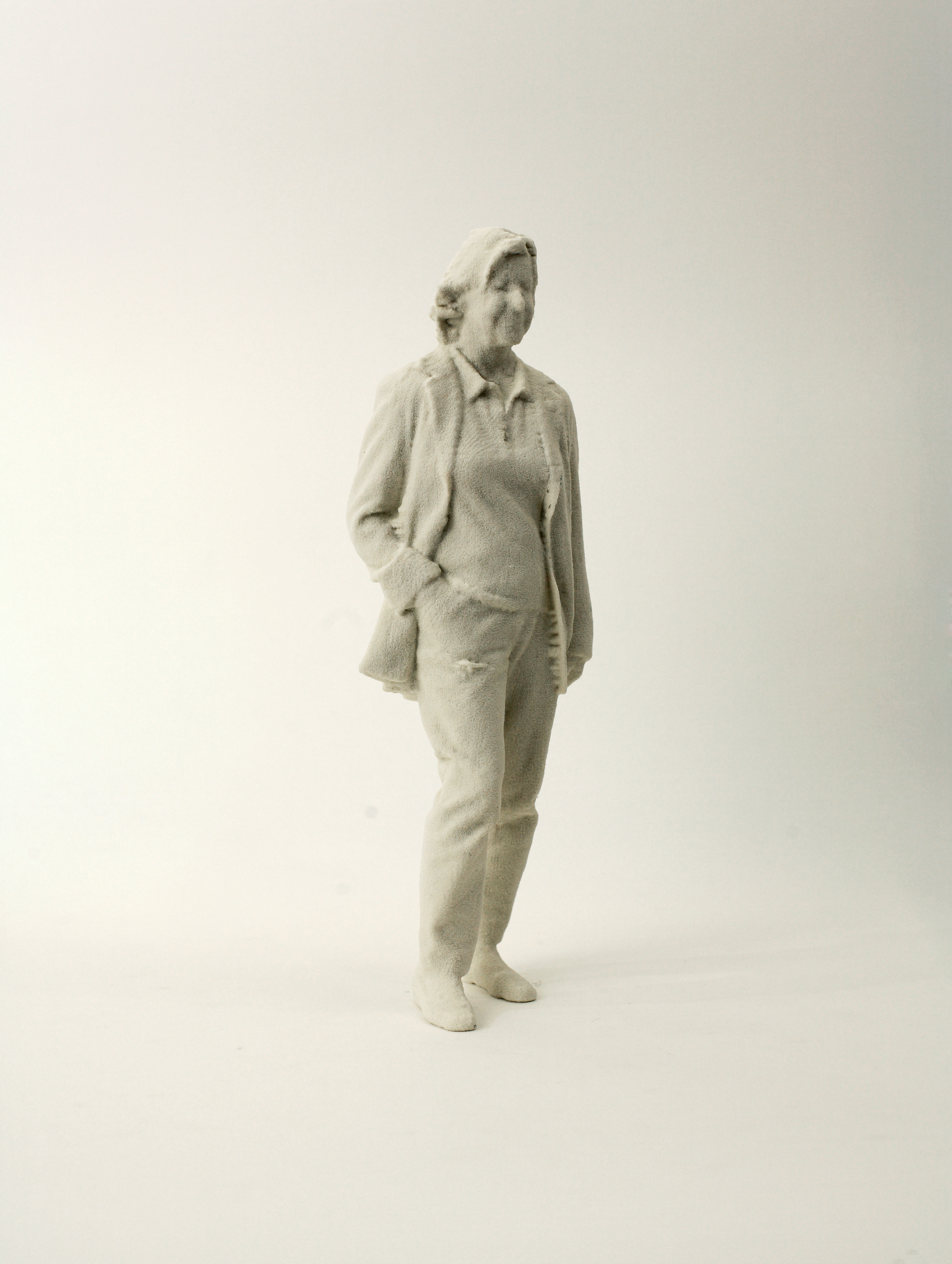Sander, Karin
Born 1957 in Bensberg, Germany, lives in Berlin and Zurich
At first glance, the sculptures created by Karin Sander are not anything really exceptional: ordinary figures made from plaster several centimetres high. They are simply grouped on shelves, some left in their original white state, some painted with colours. A closer look shows individual figures surprisingly real and yet dressed in an ordinary fashion. They have trousers, a jacket, a T-shirt. Some are plump, others slouching. One group is moving, another group is standing rigidly with an absent, distant gaze—the sculptures are definitely not idealized images of people, as was the intention of European sculptures since the classical period. Why then all of the agitation associated with Sander’s sculptures?
The surprise comes when visitors realize how these figures were created. Sander works with a special 3D body scan, normally used in the world of fashion to determine clothing sizes, that can create accurate copies of real people. The scanner first reads and records the contours of the person, and then with this record, a special machine that looks like a cabinet makes a cast from plaster at a scale of 1:10. So these ordinary figures are precise portraits of specific people. The name of the person used as a model for the sculpture then becomes the title. In this way, Sander depicted not only her friends and figures from the art world, but also many of the people visiting her exhibitions. In 2002, during an exhibition at the Stuttgart Staatsgalerie, visitors could have themselves scanned for a mere € 80 and be amused by the fact that their 3D portrait would be in the gallery’s collection forever, just as the artist had intended.
However, her creations by no means stop with these inconspicuous technical portraits. Sander not only records human traces, but also makes them visible. Such visible traces are directly present in her “Patinabilder” and “Gebrauchsbilder” (patina paintings and paintings for use). Meanwhile, in her series of “mailed paintings”, she purchases white painted canvases from shops and mails them throughout the world; she then displays them, showing all the traces of their travels. Occasionally, her expositions include a beautifully shining oval object that, in its radical simplicity and elegance, measures up to the work of the famous sculptor Constantin Brancusi. However, this perfect form is not a work of art—it is a polished ostrich egg. So we must logically ask: Who creates more perfect art—nature and chance, or a human being?

